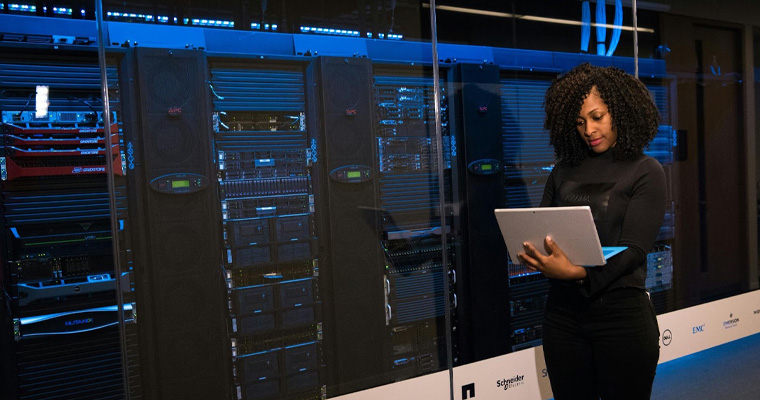In today’s competitive environment, safeguarding intellectual property (IP) is paramount for businesses aiming to maintain their competitive edge. Intellectual property leakage, or the unauthorized use, access, or distribution of sensitive innovations and ideas, can pose severe risks not only to businesses but also to entire industries. This article aims to explore the nuances of intellectual property leakage and provide effective strategies for prevention.
Understanding Intellectual Property Leakage
To combat intellectual property leakage effectively, it is essential to first understand its core components—the definitions, implications, and how such leakage can occur within various business contexts.
Definition and Importance of Intellectual Property
Intellectual property encompasses creations of the mind, such as inventions, literary and artistic works, designs, symbols, names, and images used in commerce. It serves as the foundation for innovation and creativity in both individual and corporate settings.
The importance of protecting intellectual property lies in its ability to foster an environment where creators and inventors are rewarded for their contributions. By safeguarding these assets, businesses can secure their investment in research and development while maintaining a competitive advantage in their respective industries. Furthermore, a robust intellectual property framework encourages economic growth by stimulating new ideas and technologies, ultimately benefiting consumers with improved products and services. This cycle of innovation is crucial in today’s fast-paced market, where staying ahead of competitors often hinges on the ability to protect and leverage unique ideas.
How Intellectual Property Leakage Occurs
Intellectual property leakage can arise from various scenarios, including:
- Employee Negligence: Employees might inadvertently share sensitive information through unsecured channels or fail to follow proper data handling protocols.
- Insider Threats: Disgruntled employees or those seeking to exploit trade secrets may intentionally leak confidential information.
- Inadequate Security Measures: Businesses with insufficient technological safeguards may experience vulnerabilities that expose their intellectual property to unauthorized access.
- Third-Party Risks: Collaborations with external vendors or partners can raise additional concerns if these parties do not adhere to appropriate security practices.
Understanding these avenues allows businesses to develop a more targeted approach to prevention and safeguard their valuable intellectual assets. Moreover, organizations must invest in comprehensive training programs that educate employees about the significance of intellectual property and the potential consequences of its leakage. By fostering a culture of awareness and responsibility, companies can significantly mitigate risks associated with human error and enhance their overall security posture. Additionally, implementing regular audits and assessments of both internal and external security measures can help identify vulnerabilities before they can be exploited, ensuring that intellectual property remains protected in an increasingly interconnected world.
The Impact of Intellectual Property Leakage
The repercussions of intellectual property leakage extend beyond immediate financial loss, affecting various dimensions of a business and the industry as a whole.
Consequences for Businesses
For companies, the consequences of intellectual property leakage can be catastrophic, leading to:
- Loss of Competitive Advantage: The exposure of proprietary technologies and processes can allow competitors to replicate or improve upon a company’s offerings.
- Financial Penalties: Businesses may face financial ramifications not only from the diminished market position but also through potential legal fees associated with enforcing intellectual property rights.
- Reputational Damage: A company known for poor IP management may suffer long-term damage to its brand and customer trust, impacting future opportunities.
Moreover, the internal culture of a company can be significantly affected. Employees may feel demoralized or insecure about their roles if they perceive that their innovations are not adequately protected. This can lead to decreased productivity and a reluctance to share ideas, as employees may fear that their contributions could be misappropriated. In an environment where trust is eroded, the collaborative spirit essential for innovation can be stifled, leading to a cycle of stagnation.
Effects on Industry Innovation
On a broader scale, intellectual property leakage affects industry innovation by:
- Stifling Creativity: When companies cannot trust that their innovations will be protected, they may hesitate to invest in new products or research.
- Market Instability: Leakage can lead to unpredictable market shifts as companies react to unauthorized competition, creating an atmosphere of uncertainty.
- Impediments to Collaboration: The threat of leakage may discourage collaborations and partnerships between businesses that could otherwise lead to significant advancements in technology.
This environment of uncertainty can also deter venture capital investment, as investors typically seek stable markets with predictable returns. When intellectual property is at risk, the innovation potential diminishes, leading to fewer startups and a slowdown in technological advancements across the sector. As a result, industries may find themselves lagging in global competitiveness, unable to keep pace with regions that prioritize and protect intellectual property rights effectively.
Strategies for Preventing Intellectual Property Leakage
Addressing the potential for intellectual property leakage requires a multifaceted approach, implementing comprehensive security measures and fostering a culture of IP awareness among employees.
Implementing Strong Security Measures
One of the first lines of defense against intellectual property leakage is the establishment of robust security practices, including:
- Data Encryption: Encrypting sensitive data can render it unreadable to unauthorized users, greatly reducing the risk of exposure.
- Access Controls: Limiting access to intellectual property based on employee roles and responsibilities ensures that only authorized personnel can engage with sensitive information.
- Regular Audits: Conducting periodic security audits can identify vulnerabilities and allow for timely intervention before a breach occurs.
Additionally, organizations should consider implementing advanced technologies such as intrusion detection systems and firewalls that actively monitor and protect against unauthorized access attempts. These systems can provide real-time alerts, enabling a swift response to potential threats. Furthermore, the integration of multi-factor authentication adds an extra layer of security, making it significantly harder for unauthorized individuals to gain access to sensitive data, even if they manage to obtain a password.
Educating Employees about Intellectual Property Rights
Employee training programs focused on intellectual property rights are crucial. Such initiatives should cover:
- Understanding of IP Types: Employees should be educated about the various types of intellectual property and their significance to the organization.
- Best Practices for Handling IP: Providing guidelines on securely managing and sharing intellectual property is essential for mitigating risk.
- Reporting Procedures: Employees should feel empowered to report potential leaks or suspicious activities without fear of reprisal.
Moreover, fostering a culture of openness and communication regarding IP issues can significantly enhance the effectiveness of these training programs. Regular workshops and seminars can keep employees updated on the latest trends and threats in intellectual property management. Engaging employees through interactive sessions, such as case studies or role-playing scenarios, can also help them understand the real-world implications of IP leakage and the importance of safeguarding proprietary information. By creating an environment where employees feel responsible for protecting the organization’s intellectual assets, companies can significantly reduce the risk of unintentional leaks and breaches.
Legal Aspects of Intellectual Property Protection
A clear understanding of the legal frameworks surrounding intellectual property is vital for effective protection and recourse in cases of leakage. This understanding not only empowers creators and businesses to safeguard their innovations but also fosters a culture of respect for intellectual contributions across industries.
Understanding Intellectual Property Laws
Intellectual property laws vary by jurisdiction but generally encompass several key areas, such as:
- Patent Laws: Protect inventions and improvements for a specific duration, thus incentivizing innovation. The patent process can be intricate, often requiring thorough documentation and legal expertise to navigate successfully.
- Copyright Laws: Safeguard creative works like music, literature, and art, ensuring that creators receive recognition and financial benefit. Copyright protection is automatic upon creation, but registering a work can enhance legal standing in disputes.
- Trademark Laws: Protect logos, symbols, and brand names to prevent consumer confusion and ensure brand integrity. Trademarks can be renewed indefinitely, as long as they are in use, making them a crucial asset for businesses.
Familiarity with these laws enables businesses to navigate the complexities of IP protection more effectively. Moreover, understanding the nuances of international IP laws is increasingly important in our globalized economy, as businesses often operate across borders and must comply with varying regulations.
Legal Recourse in Case of Leakage
In situations where intellectual property leakage occurs, businesses should be prepared to take action through:
- Civil Litigation: Pursuing legal action against offenders can provide a remedy, such as monetary compensation or injunctions against further infringement. The litigation process can be lengthy and costly, but it serves as a critical tool for enforcing rights.
- Negotiation and Settlement: In some instances, settling outside the courtroom may be a more expedient and less costly approach. This route often allows for more flexible solutions tailored to the needs of both parties involved.
- Collaboration with Law Enforcement: For severe breaches, engaging with law enforcement may help bring perpetrators to justice and deter future offenses. This collaboration can also involve reporting criminal activities related to IP theft, which may lead to broader investigations.
Additionally, businesses should consider implementing proactive measures such as regular audits of their intellectual property portfolio and employee training programs on IP rights. These strategies not only help in identifying potential vulnerabilities but also create a culture of awareness and respect for intellectual property within the organization. By fostering an environment where employees understand the importance of IP, companies can significantly reduce the risk of unintentional leakage and enhance their overall protection strategies.
Role of Technology in Safeguarding Intellectual Property
The advancement of technology plays a critical role in the protection of intellectual property, providing tools and frameworks to enhance security protocols.
Technological Tools for Protection
Several technologies are available to help protect intellectual property, including:
- Digital Rights Management (DRM): Technologies that control and restrict the use of digital content to prevent unauthorized distribution.
- Blockchain: This emerging technology can create immutable records of ownership or access, making it easier to track intellectual property rights.
- Artificial Intelligence (AI): AI can analyze large datasets to detect potential IP infringements and automate the monitoring of intellectual property usage.

Future Trends in Intellectual Property Protection Technology
As technology evolves, so will the tools used to protect intellectual property. Anticipated future trends include:
- Increased Use of AI and Machine Learning: These technologies will become more prevalent in identifying patterns of IP infringement and securing valuable assets.
- Greater Emphasis on Cybersecurity: With rising cyber threats, investing in robust cybersecurity measures will be essential for protecting intellectual property.
- Integration with Global Standards: As more businesses operate internationally, compliance with global IP protection standards will become increasingly important.
Conclusion
In conclusion, preventing intellectual property leakage demands a proactive approach encompassing education, technology, and legal frameworks. By understanding the foundations of intellectual property, recognizing the risks of leakage, implementing strong security measures, and fostering an organizational culture of respect for intellectual property rights, businesses can significantly mitigate the risks associated with intellectual property leakage.
Computer Packages Inc. (CPI) is a privately owned IP management company with over fifty years of experience serving the IP community. Our mission is to be the most trusted partner in safeguarding clients’ IP assets with innovative IP management software and annuity services. Learn how we specialize in IP patent, trademark, and annuity management on our Products & Services page.


